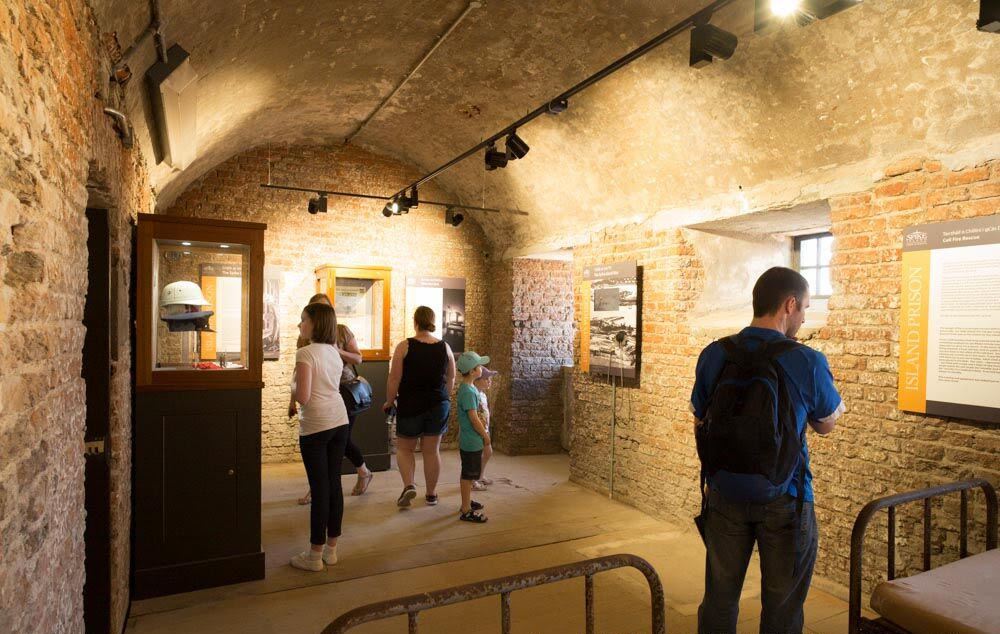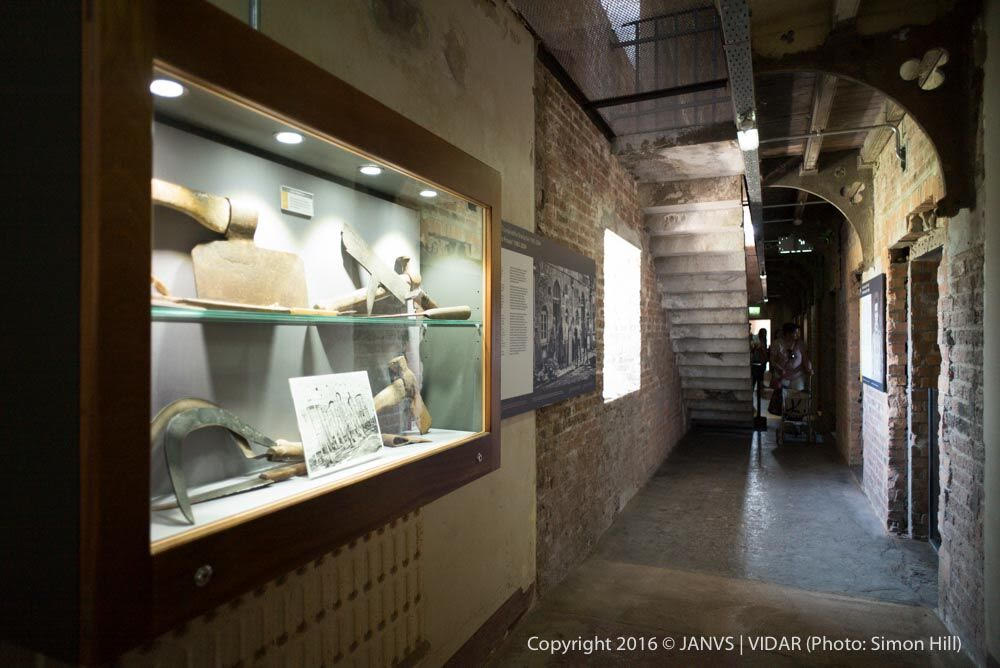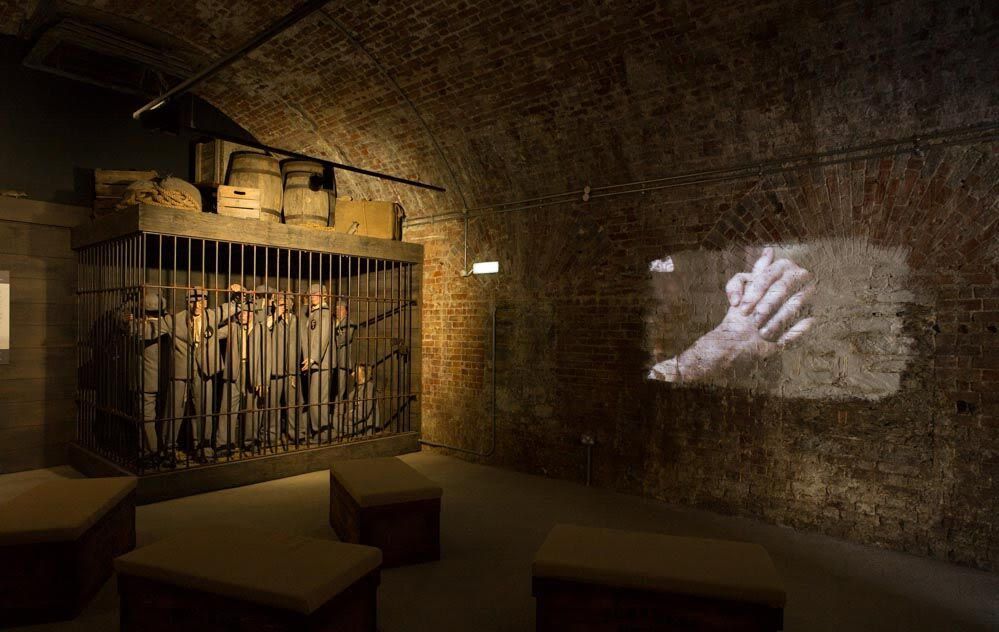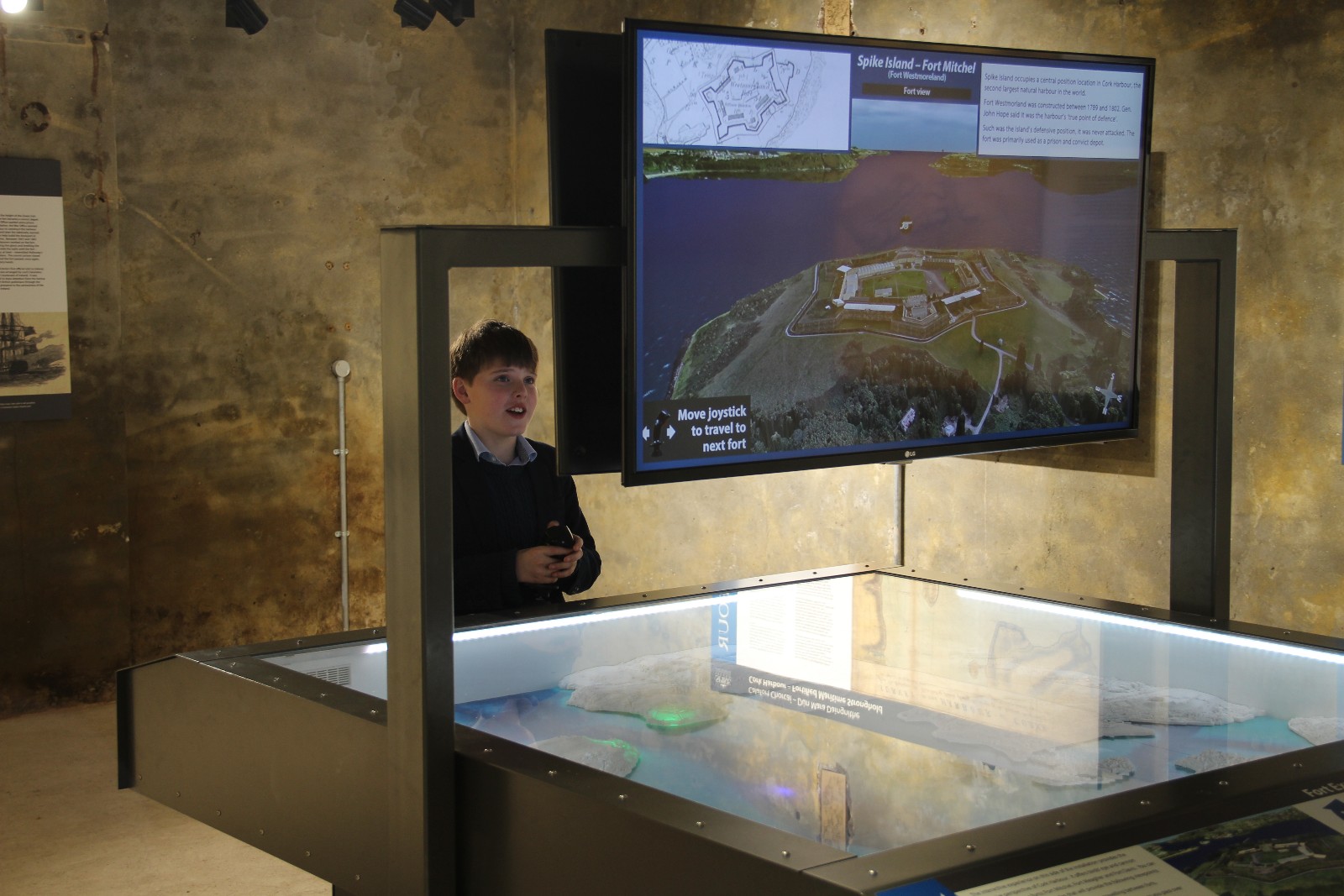The Punishment Block is the only purpose built cell block in the Fort. It was built in response to the murder of Warder William Reddy in 1856.
Work began in 1858 using local limestone with military and convict labour, and it was opened in 1860.
 It consisted of twenty eight solitary confinement cells and housed the ‘Penal Class’, considered the most dangerous prisoners. They were heavily chained and clothed in black from head to toe, with a veil hiding all but their eyes.
It consisted of twenty eight solitary confinement cells and housed the ‘Penal Class’, considered the most dangerous prisoners. They were heavily chained and clothed in black from head to toe, with a veil hiding all but their eyes.
 Conditions inside the block were the harshest inside the prison. At first, the cells were furnished with only a stool and convicts slept on the floor. Prisoner descriptions of medieval conditions in a Victorian prison outraged many. There were several suicide attempts and the block was the main reason that Spike Island was described as “Hell on earth” by the penal classes. A sentence to Spike Island was the worst time any offender could do, and this was largely attributable to the Punishment block.
Conditions inside the block were the harshest inside the prison. At first, the cells were furnished with only a stool and convicts slept on the floor. Prisoner descriptions of medieval conditions in a Victorian prison outraged many. There were several suicide attempts and the block was the main reason that Spike Island was described as “Hell on earth” by the penal classes. A sentence to Spike Island was the worst time any offender could do, and this was largely attributable to the Punishment block.
During the convict era 1847-1883, it housed political prisoners who were guilty of ‘treason against the Crown’.
Today, visitors can see the Guard room and learn how archaeologists worked on the site. The Dark Cells can be explored by torchlight, while the modern solitary cells are also on view which were in use right up until 2004. The cells of Irish nationalists Patrick Tierney and John Mitchel are both recreated, and the upstairs rooms of the block contain an art exhibition of prisoners artwork created in the 1980’s and 1990’s.
CHILDREN’S PRISON:
 Before Victorian times there was no distinction between age groups when it came to crime and punishment, but during the 1850s when Spike Island’s prison population had swollen to the largest in the world, people began to discuss the need for prisoner reform rather than punishment.
Before Victorian times there was no distinction between age groups when it came to crime and punishment, but during the 1850s when Spike Island’s prison population had swollen to the largest in the world, people began to discuss the need for prisoner reform rather than punishment.
Conditions would slowly improve for child convicts and by the time Spike Island’s 19th Century prison was built it was decided to at least separate the adults from the children. But a sentence on Spike Island was still very hard for the 100 children who were held in the childrens dormitory. Long chains were hung from the ceiling and they supported several hammocks in which the children would sleep, having to scamper up the chains to their designated bunk.
Sadly not all children made it off the island with many succumbing to the difficult conditions. A good many would have arrived already weak from the famine conditions which had gripped Ireland in the late 1840s.
 The building used to house the boys became the shell store for the fort, used to protect the ammunition from enemy shells. Today the building houses a re-creation of the cells identical to those on a convict vessel. These convict ships were moored in Cork harbour and transported prisoners from Ireland to overseas. There are also video installations telling the stories of three generations of Spike Island prisoners seperated by 3 centuries. Next to this is our John Mitchel room which tells the story of the nationalist after whom the fort is named.
The building used to house the boys became the shell store for the fort, used to protect the ammunition from enemy shells. Today the building houses a re-creation of the cells identical to those on a convict vessel. These convict ships were moored in Cork harbour and transported prisoners from Ireland to overseas. There are also video installations telling the stories of three generations of Spike Island prisoners seperated by 3 centuries. Next to this is our John Mitchel room which tells the story of the nationalist after whom the fort is named.
Our social history rooms have many interviews with the former residents of the island and the adjoining Cork harbour room has old maps from the harbour and an interactive audio display where you can steer a ship into Cork Harbour and use the cannons on Spike Island to defend the harbour!
This fascinating building with its tragic past and modern interpretation is not to be missed on a visit to Spike Island.
